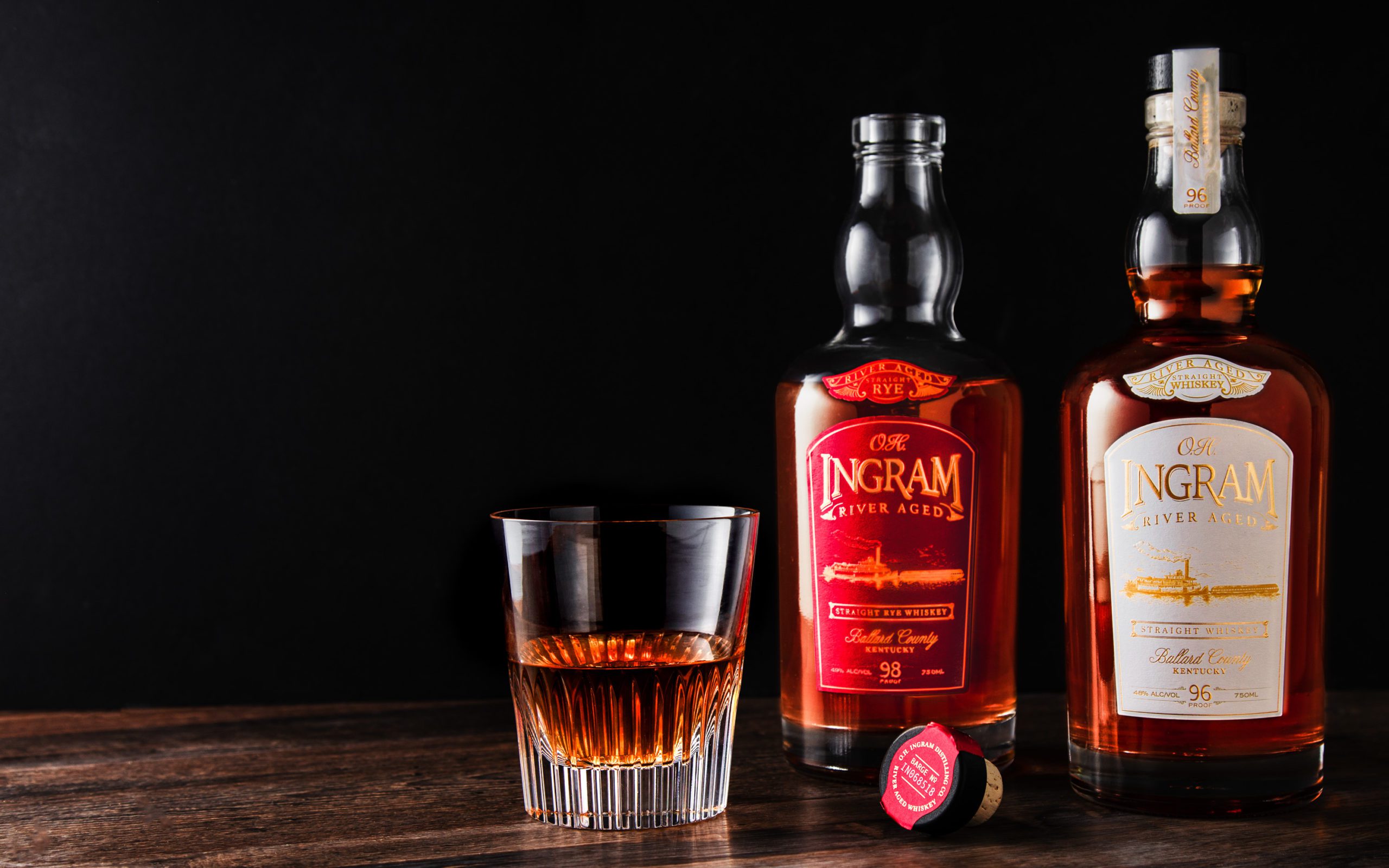Supreme Court Tariff Ruling Could Come As Soon As Friday
The US Supreme Court scheduled Friday as an opinion day, indicating that date will be the first chance for a ruling on President Donald Trump’s global tariffs.

By Barry Parker (gCaptain) –
With the big Workboat show coming up in New Orleans this week, gCaptain is taking a look a unique maritime business, of sorts, captained by a scion of one of the largest players in the inland barge business.
“Hank” Ingram- from the barge behemoth of the same name, came up with the idea for his company, Brown Water Spirits, which markets its whiskies under the name O.H. Ingram River Aged Whiskey. In the early 1800s, before the development of our present transport infrastructure, Kentucky whiskey was “barged” down the Ohio and then Mississippi rivers to markets in New Orleans. Now, it’s come full circle, with Hank Ingram aging bourbon and rye whiskey on barges tied up in western Kentucky along the Mississippi River.
The story of Ingram Barge (based in Nashville, and active on the inland waterways with approximately 150 towboats and 5000 barges- mainly in the dry trades) dates back to the 1940s, when Hank’s great-grandfather began the present company. Its roots go back even further, to the 1850s, when ancestors had started moving logs down the rivers, which pointed the family towards a barging business. Along the way, Ingram-related entities were active in oil refining and moving refined products on the rivers; this continues today, complementing moves of ag products, coal, cement and aggregates on the rivers.
Fast forward to the 2010s, when Hank Ingram, a budding spirits aficionado seemingly bound for a career as an executive in the family’s barge business, wrote a prize-winning paper at Vanderbilt Business School, which led to the idea for a protype of Brown Water Spirits.
As described in a recent episode of The Bourbon Life podcast, he described the travails of the first few years, butting up against, and navigating around, all manner of regulatory shoals. He noted, in particular, “Lozman”- a 2013 Supreme Court case with the outcome that admiralty jurisdiction (and all the “can’t do this, can’t do that’s” that came with it) did not apply to a floating home.
As Hank Ingram explained, this emboldened the budding whiskey blender to seek, and gain, opinions from regulators that allowed whiskey storage and blending aboard a floating facility. The inputs, mixtures with various “mashbills” (the recipes) are produced at a distillery in Owensboro, Kentucky (on the Ohio River, near Mile Marker 757- 758), where they are placed in wood barrels, and then they are brought to the barge.
Infusing flavor from oak barrels is an important part of making bourbon and rye whiskey (the main ingredients in the O H Ingram River Aged Whiskey offerings). Throughout Kentucky (and other producing states; Tennessee looms large), storage of barrels is normally done in a “rickhouse”- essentially a warehouse where the barrels are stacked for some period of time, typically three or four years and sometimes longer, before being bottled.
According to Hank Ingram, doing this “aging” on a barge brings advantages to the flavoring process- with the flavor of the whiskey benefitting from the up and down motion, the outdoor air with its humidity, and the fluctuations in temperatures. The barge design, fitted with vapor removal and air-flow systems, allows for barrels are stacked seven barrels high, and ten barrels wide- roughly 3,000 barrels per barge (“not pushing against the limit of what the barge could hold”). Long-time whiskey fans will know that the maritime angle is not new; Jeffersons Bourbon hooked up a few years back with Ocearch- a research organization that runs a shark tracking vessel, producing “Jeffersons Ocean”; with the barrels of bourbon initially aged on deck. These days, Jefferson Ocean barrels travel in containers on liners- resulting in a much more tolerable taste. Kaiyo, a Japanese blend, is also aged by taking a trip in the liner trades.
So far, the blending fleet, described as “floating rickhouses” consists of two covered hopper barges (previously used for hauling corn- fitted with fiberglass covers), with plans to increase this fleet in the future. Barge trackers on the Mississippi can look for the original unit- IN-068518 (built 2006 at Jeffboat) tied up at Wickliffe, Kentucky (on the Mississippi River, just below the confluence with the Ohio River); a deeper draft indicates more barrels. Merch (think about shirts and cups) with this designation is available on www.ingramwhiskey.com. Mr. Ingram revealed that he will be shifting operations from Wickcliffe down to Columbus, Kentucky (where Ingram Barge has a fleeting area), with the capacity to handle more barges. This is a sign of a business set for rapid expansion.

Sign up for gCaptain’s newsletter and never miss an update

Subscribe to gCaptain Daily and stay informed with the latest global maritime and offshore news
Essential news coupled with the finest maritime content sourced from across the globe.
Sign Up